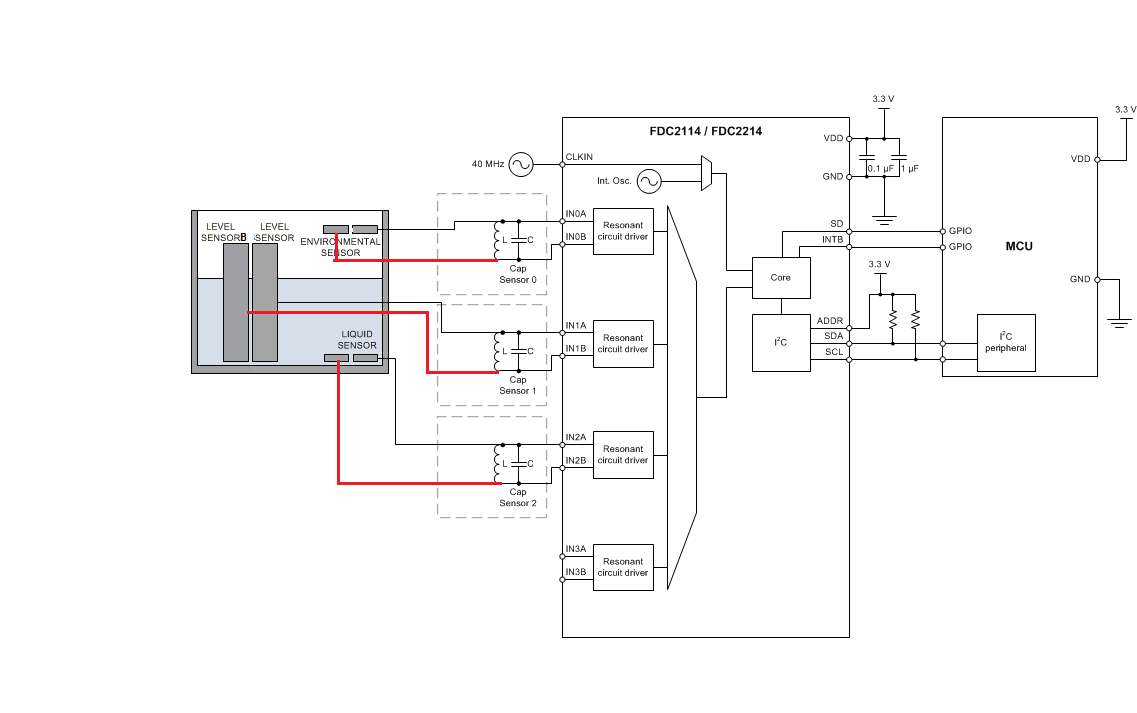HI
I'm Working on FDC2214 EVM for liquid level sensing.
I've connected level electrode to INOA and reference electrode to IN1A.
I've shield electrodes (one for level electrode and another for reference electrode (SHLD1)).
Next, I've Shield electrode (SHLD2 ) connected to ground electrodes.
Now, where should I connect these shield electrodes on FDC2214 EVM?
Can I get connections of level electrode, reference electrode and its corresponding ground electrodes to be connected to FDC2214 EVM?
Waiting for your response.
Thank you and Regards,
Vignesh


